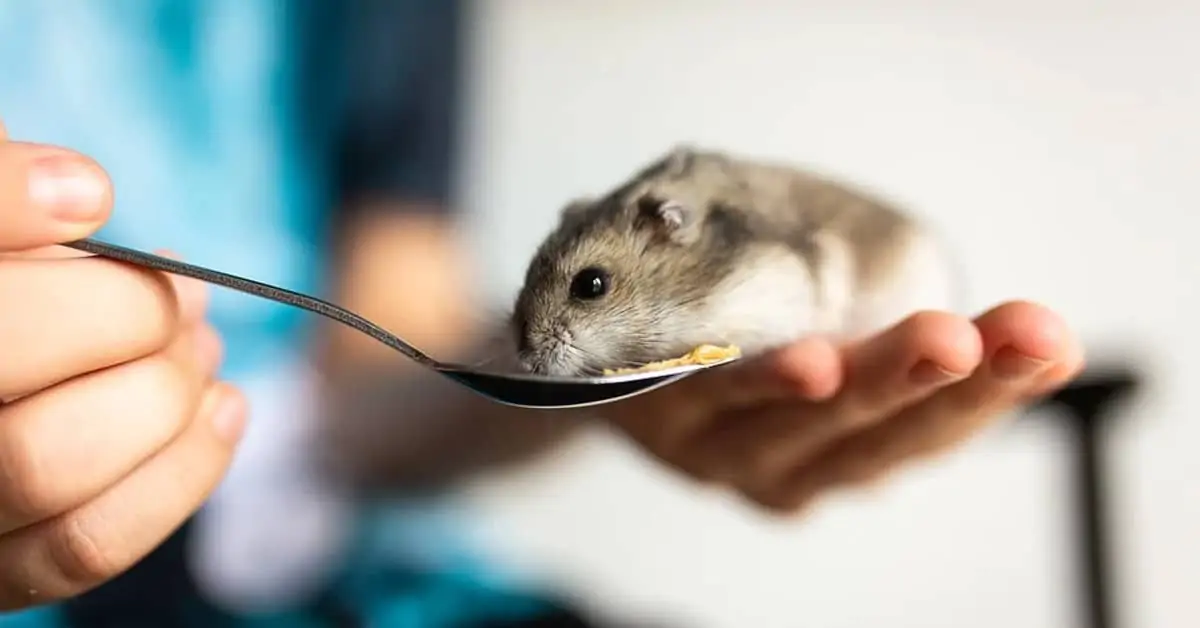Hamsters are small nocturnal pets that are popular in many households today. Like other pets, they may have to move with you once or twice in their lifetime. Because traveling can be hard on pets, how do you calm your hamster while traveling?
The most important way to keep your hamster calm while traveling is to provide a comfortable transport material. It may be your hamster’s regular cage or a travel carrier. Once you outfit the transport carrier with the right materials and keep the car’s environment suitable for it, your hamster will be calm.
This article considers whether hamsters get stressed while traveling, how long they can travel, and if they can survive long travels. I also look at sedating your hamster for travel and what you can give your hamster to calm down when traveling. In conclusion, there are tips on the best calming aid for hamsters and how to make your hamster comfortable on a long car ride.
Do Hamsters Get Stressed While Traveling?

Hamsters are natural prey animals, and this causes them to be extra jumpy and always on the lookout for danger. Traveling can be a significant stressor in animals that are easily stressed.
Pets like cats and dogs can vomit or yowl to show their anxiety about traveling. Hamsters cannot vomit, but you can see how anxious they are because they get hot, sweaty, hide, and chew more than usual.
Because of how stressful traveling can be for hamsters, only transport them when necessary and ensure that you meet all their needs to decrease the stress of traveling.
How Long Can Hamsters Travel?
The duration or length of travel hamsters can take always boils down to the size of their transport material and what is in it. With a small travel carrier, you can only fit bedding, one or two treats, and a small hideout. A hamster should only be inside a small carrier for 30 minutes to 2 hours.
Alternatively, a large cage can hold more toys, food, water, and hideouts for the hamster. With all their needs met, a hamster traveling in comfort can stay in its travel cage for 10 hours or more. The large cage could be their original home, or a plastic bin outfitted explicitly for travel.
Hamsters require enough space to run around and spend their energy. Their brains also need constant stimulation, so a large cage with space and enough toys and activities to keep them occupied is ideal for staying at home and going on long journeys.
Can Hamsters Survive Long Travels?
Hamsters can hold their own during long travels, as long as your keep their immediate environment familiar and maintain good ventilation and temperature in the car. Hamsters can even travel with you in the cabin of planes.
Although hamsters can survive long travels, short car trips are the best journeys for hamsters. A quick visit to drop off your hamster at your friend’s house if you will be going away for a short time or to the vet for a routine checkup is not that big of a trip.
For brief trips, place the hamster in a small travel carrier with some of its familiar bedding to help it feel more at ease. The hamster may not need food or water for this trip, but you can place a little snack or treat to keep it occupied.
Should I Sedate My Hamster for Travel?
No matter how stressful travel can be for pets, experts vehemently advise against sedating or tranquilizing them. They especially warn against doing this for pets on flights because the altitude and pressure in the plane can further alter how animals react to sedatives.
It would be best if you did not sedate your hamster for travel. If your hamster is too anxious or stressed to travel, you can hire a pet sitter or have your family member take care of your hamster while you are away.
Leaving your hamster behind is better than subjecting your hamster to medications that may be harmful.
What Can I Give My Hamster to Calm down When Traveling?

A calm hamster makes for an exciting adventure partner when traveling. To make your hamster calm, here are some things you can give to it or do:
- HomeoPet’s Travel Anxiety drops
This liquid preparation is a natural homeopathic remedy that relieves stressful situations, including traveling, and it can help with panting, pacing, and hiding.
- Small Mammal Calming & Bonding Kit
It includes a calming spray and calming wipes, and it is used to facilitate the bonding of small pets with their owners.
- The calmness it induces to facilitate bonding can also help with the stress of traveling. Spray a little on your fingers or a damp cloth and stroke it around your hamster’s muzzle.
- Hide treats and pieces of food in your hamster’s carrier. Your hamster can forget to be stressed if it is busy foraging the hidden food and has enough substrate and hideouts to play in.
What Is the Best Calming Aid for Hamsters?
ULIGOTA Crunchy Chew Treats are the best calming aid for hamsters. These treats are ideal for your hamsters because they contain antioxidants and also provide an object for your hamster’s teeth to gnaw on.
Like chew sticks, they help with boredom, anxiety, and stress and are an excellent treat to use when you are traveling or bonding with your hamster. They are also 100% natural and safe to use.
How Can I Make My Hamster Comfortable on a Long Car Ride?
As you now know, having your hamster in a comfortable carrier/cage is the major step in keeping it comfortable for long trips. Other steps are:
- Ensure that your hamster’s travel cage is correctly secured in the back or passenger seat with the airbag disabled.
- Transport your hamster in a quiet, air-conditioned car. Always speak softly to avoid startling your hamster.
- Play soothing music.
- Provide enough food and offer water when you stop for rest or place a piece of cucumber in the carrier.
Hamsters are anxious by nature, so you must do your best to provide a stress-free travel environment for them.

